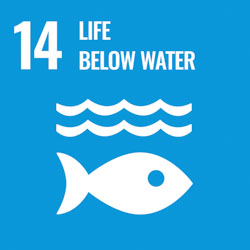Significance
We are committed to understanding and mitigating our potential impact on biodiversity by utilizing the World Wildlife Fund (WWF) Biodiversity Risk Filter, which provides a comprehensive assessment of ecosystem and wildlife risks associated with our operations. Based on this analysis, we aim to develop a strategic management approach to limit both physical and reputational biodiversity risks. Our Environmental Management Policy serves as a comprehensive framework for managing the environmental impacts of our products and services, with a specific focus on nature and biodiversity conservation. Our strategic approach encompasses minimizing the environmental footprint across our entire product lifecycle, including waste and greenhouse gas emissions, conserving natural resources such as water and raw materials, and promoting environmental awareness among our partners by systematically assessing their environmental management system.
Key Metrics
The below metrics are based on Berry's Fiscal Years unless otherwise noted.
|
Biodiversity |
||||||
| 2022 | 2023 | 2024 | ||||
| Key Biodiversity Areas (KBA) | Number | Percentage | Number | Percentage | Number | Percentage |
| Facilities identified as being in assessment area greater than 15km from a KBA (very low location risk)¹ | 81 |
31% | 75 |
32% | 74 |
31% |
| Facilities Identified as Being in Assessment Area With 10% or Greater Overlap With KBAs (High Location Risk or Greater)¹ |
2 | 1% |
2 | 1% |
2 | 1% |
| Protected Areas (PA) | Number | Percentage | Number | Percentage | Number | Percentage |
| Facilities Identified as Being in Assessment Area With 5% or Greater Overlap With IUCN Category I-IV PAs (High Location Risk or Greater)² | 72 |
27% | 66 |
28% | 60 |
26% |
| Areas (high location risk or greater)² | ||||||
¹ Analysis completed using WWF Biodiversity Risk Filter tool, where data for Global KBAs were overlaid onto BirdLife International's World Database of Key Biodiversity Areas and classified into risk classes. Further information can be found in their methodology document.
² Analysis completed using WWF Biodiversity Risk Filter tool, where data for Global PAs were overlaid onto UNEP-WCMC's World Database of Protected Areas (WDPA) and classified into risk classified into risk classes. Further information can be found in their methodology document.
Disclosures
Contribution to the Sustainable Development Goals (SDGs)

Managing our impact on biodiversity includes being committed to reducing marine litter through waste reduction initiatives and ensuring resin is handled correctly and does not end up in the marine environment.

By evaluating the environmental impact of our facilities and supply chain on biodiversity, we can manage our impact and help preserve land ecosystems and protect habitats.
GRI and SASB Alignment
GRI 304(3-3) BiodiversityGRI 304-1 Operational Sites Owned, Leased, Managed in, or Adjacent to, Protected Areas and Areas of High Biodiversity Value Outside Protected Areas
Last updated: March 17, 2025